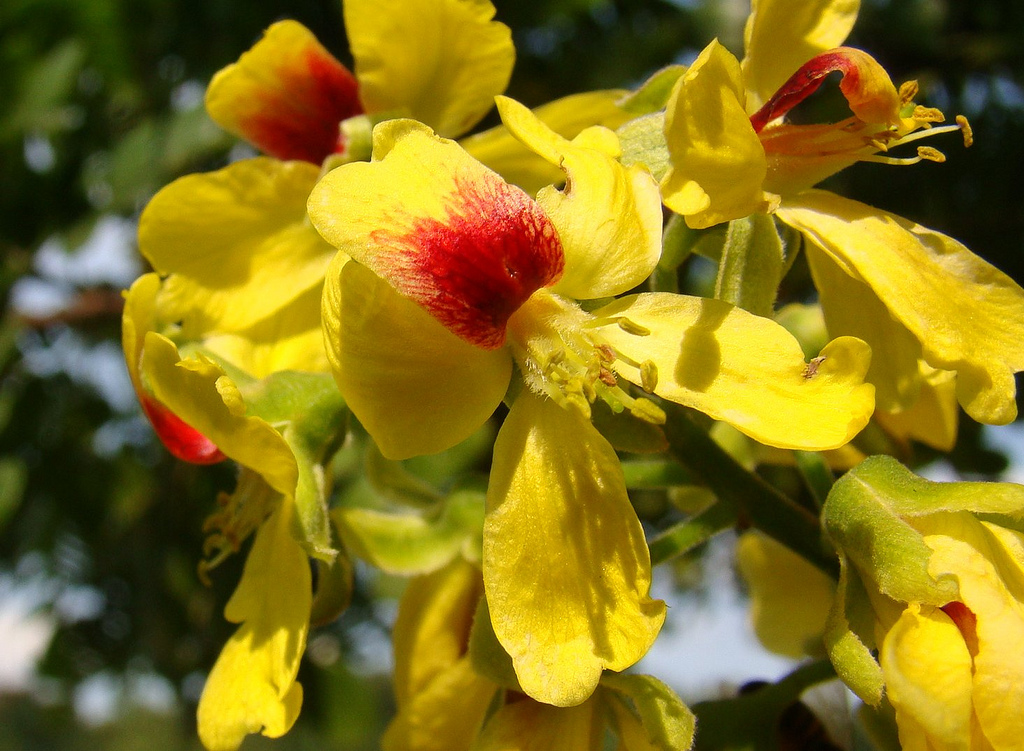Paubrasilia is the new name of Pau-brasil
Researchers have since quite a while ago scrutinized the right ordered arrangement of Pau-brasil, Brazil's national tree. Another examination utilizing DNA groupings to break down the developmental connections of Pau-brasil and somewhere in the range of 200 firmly related plants from all pieces of the tropics (together called the Caesalpinia gathering) affirms that Pau-brasil speaks to a special and particular transformative heredity. , meriting acknowledgment. as a particular kind. Given the social and verifiable significance of the tree to Brazil, the name picked for this new kind is Paubrasilia, a Latinization of its Portuguese name.
 Researchers Edeline Gagnon (University of Montreal, Canada), Haroldo Cavalcante of Lima (Jardim Botanico Institute of Weighing in Rio de Janeiro, Brazil) and Dr. Gwilym P Lewis (Royal Botanic Gardens, Kew, United Kingdom) portray the new sort an article in the diary Phytokeys, co-wrote by Gagnon and Drs Anne Bruneau (Plant Biology Research Institute, University of Montreal, Canada), Luciano Paganucci de Queiroz (University of Feira de Santana, Brazil), Colin E Hughes (Department of Systematic and Evolutionary Botany, University of Zurich, Switzerland), and Gwilym P Lewis, Royal Botanic Gardens, Kew, United Kingdom.
Researchers Edeline Gagnon (University of Montreal, Canada), Haroldo Cavalcante of Lima (Jardim Botanico Institute of Weighing in Rio de Janeiro, Brazil) and Dr. Gwilym P Lewis (Royal Botanic Gardens, Kew, United Kingdom) portray the new sort an article in the diary Phytokeys, co-wrote by Gagnon and Drs Anne Bruneau (Plant Biology Research Institute, University of Montreal, Canada), Luciano Paganucci de Queiroz (University of Feira de Santana, Brazil), Colin E Hughes (Department of Systematic and Evolutionary Botany, University of Zurich, Switzerland), and Gwilym P Lewis, Royal Botanic Gardens, Kew, United Kingdom.
In a similar article, the writers portray three other new plant genera, in particular Hererolandia (for a solitary species endemic to Hereroland in Namibia), Hultholia (out of appreciation for Cambodian researcher Sovanmoly Hul Thol) and Gelrebia (a Latinization of the word Somali). "Gelreb", signifying "camel trap" alluding to this invulnerable and prickly bush). Their work additionally reclassified the measure of seven other genera, building up another nonexclusive characterization and requesting this gathering of systematically muddled pantropical plants.
Pau-brasil was once so basic along the Brazilian coast that the sixteenth century vendors called this nation "Land do Brasil" or Brazilwood Land. The tree was well known for its red sap, utilized for coloring extravagance materials. Indeed, even today, its thick heartwood stays exceptionally prominent for making excellent violin bows.
The creators trust this new significant name will attract consideration regarding the delicate condition of the exceptionally divided and undermined woods of the Brazilian coast, where this meaningful species is compromised. "Under 7% of the Brazilian Atlantic Forest stays unblemished and notwithstanding the consideration of this species in the Convention on International Trade in Endangered Species of Wild Fauna and Flora (CITES), we have seen direct proof illicit logging of Brazil timber amid ongoing hands on work, "say the creators of the new name.Natural products with bio-activity


